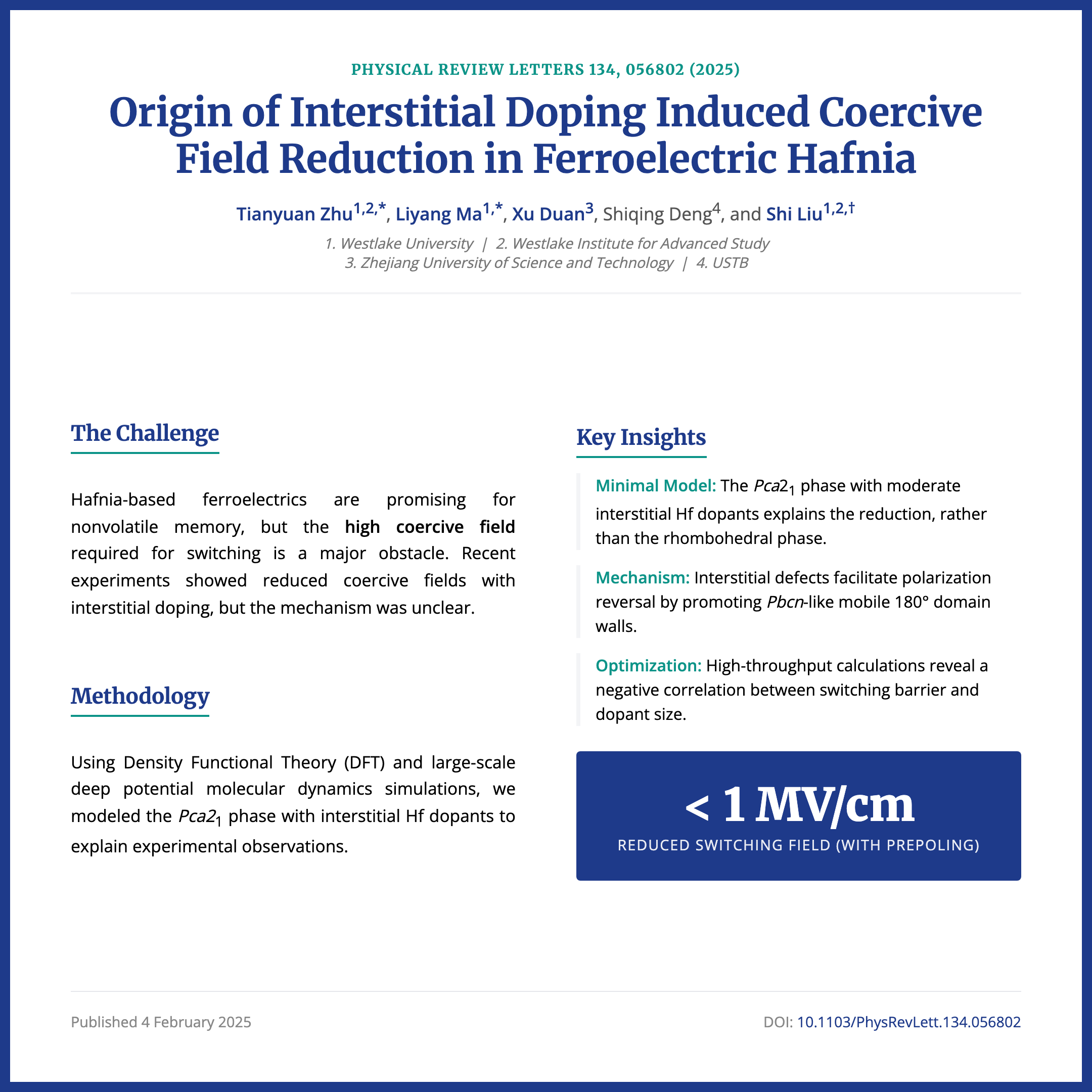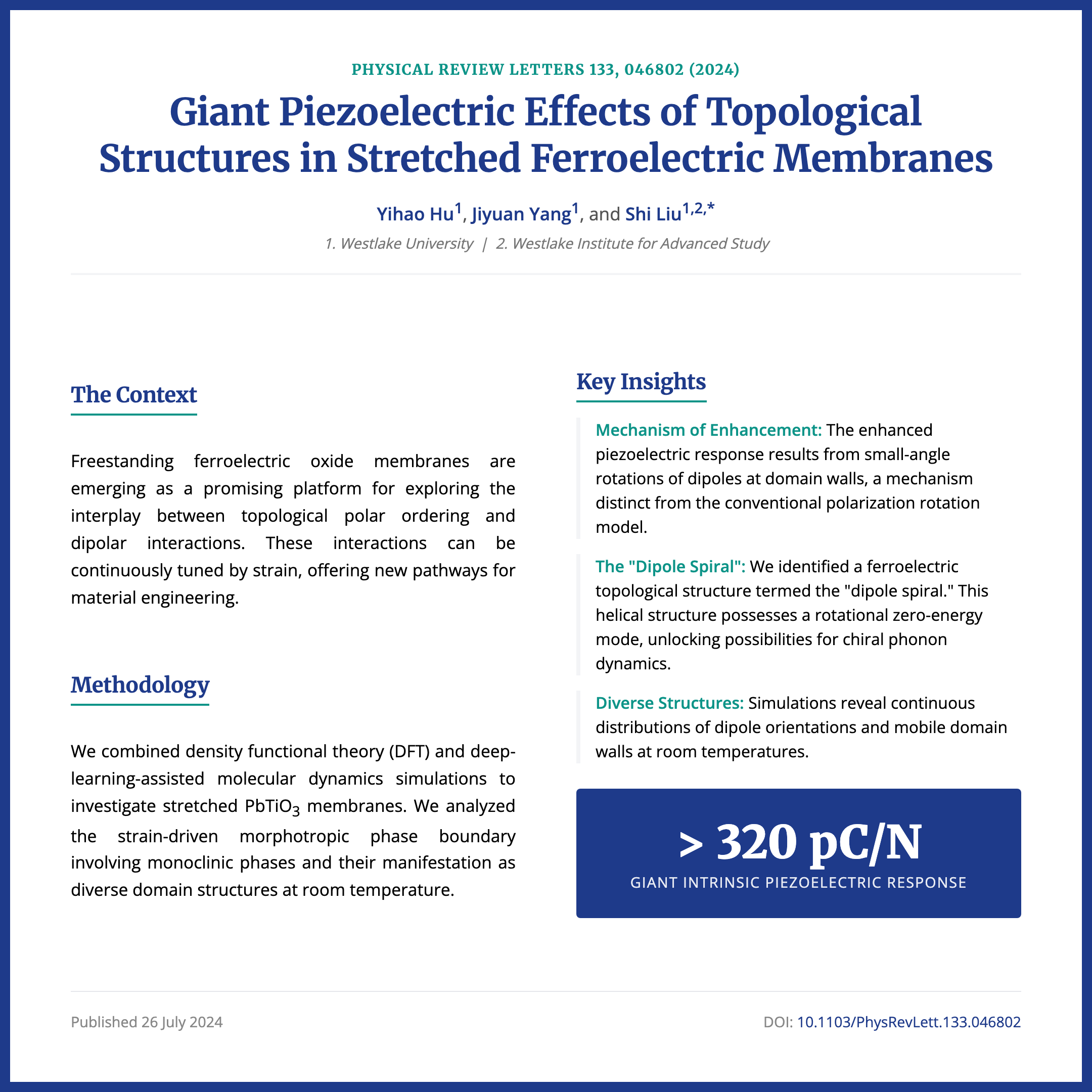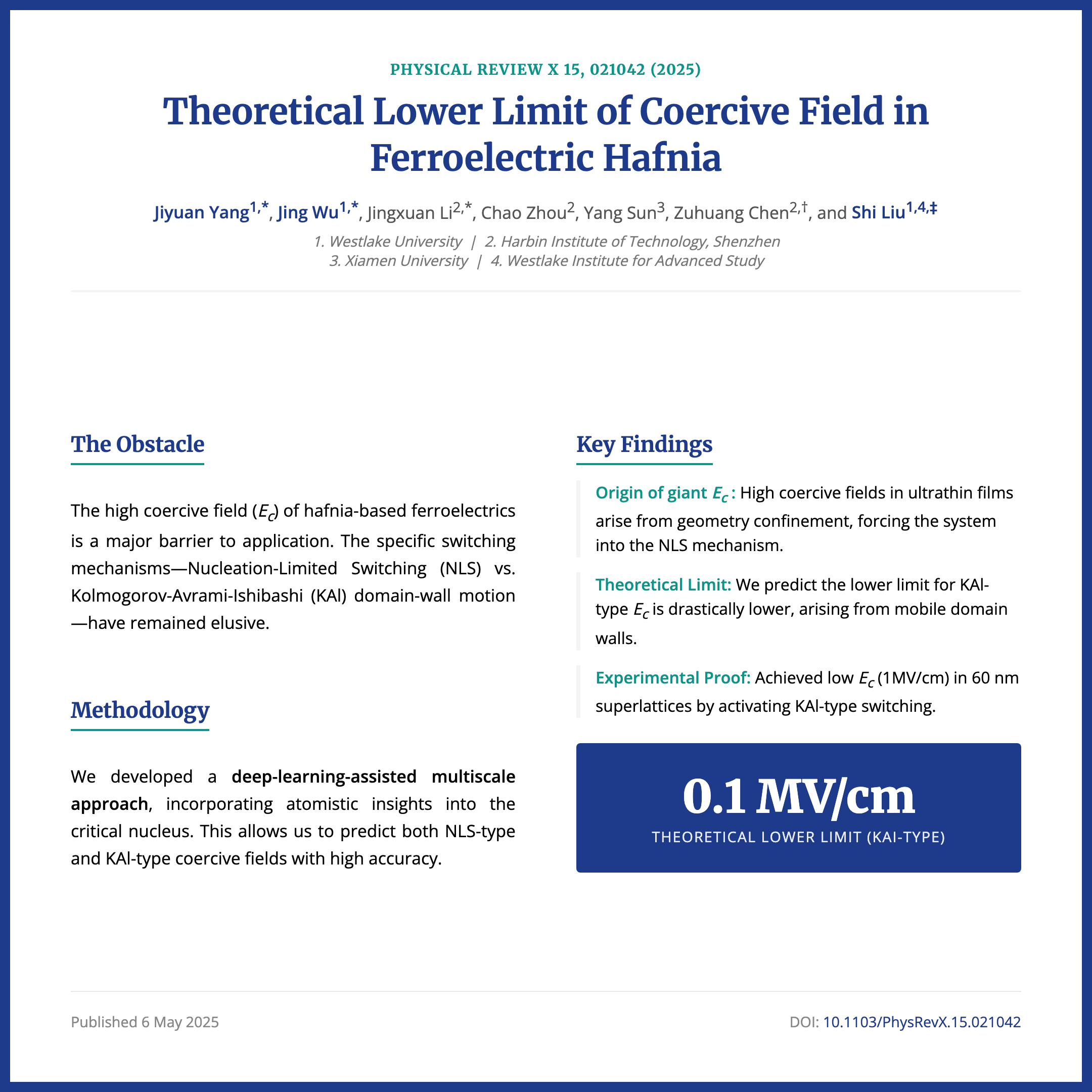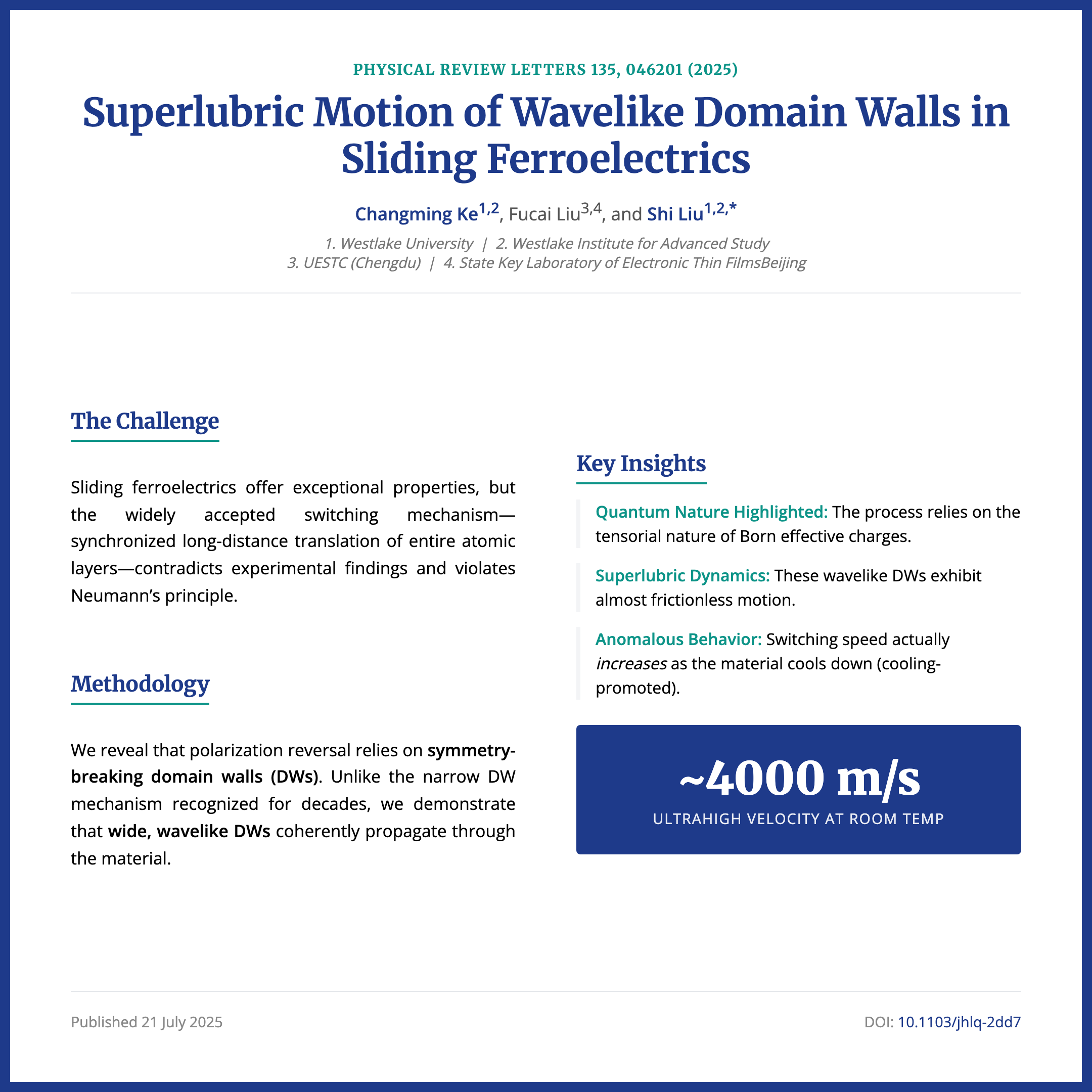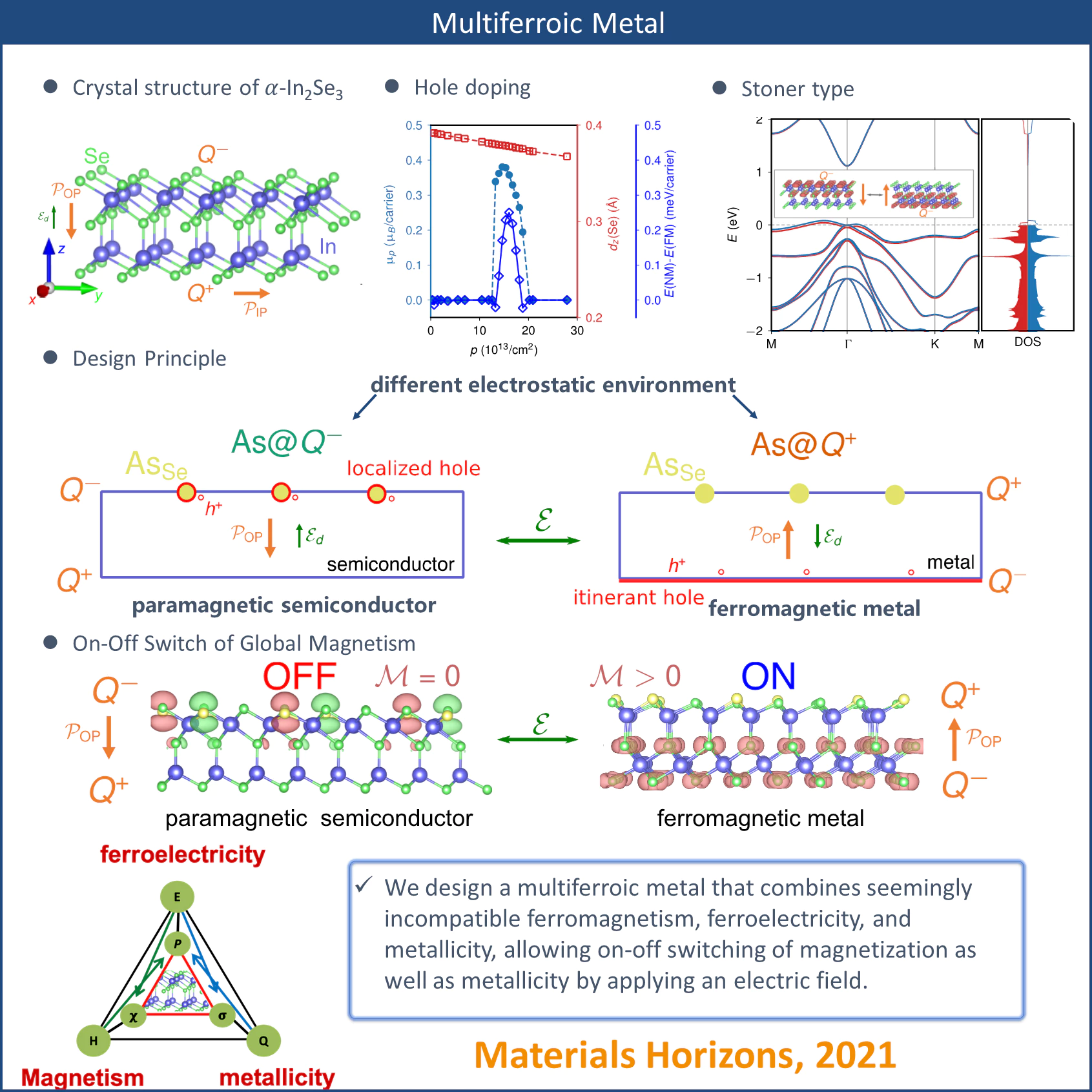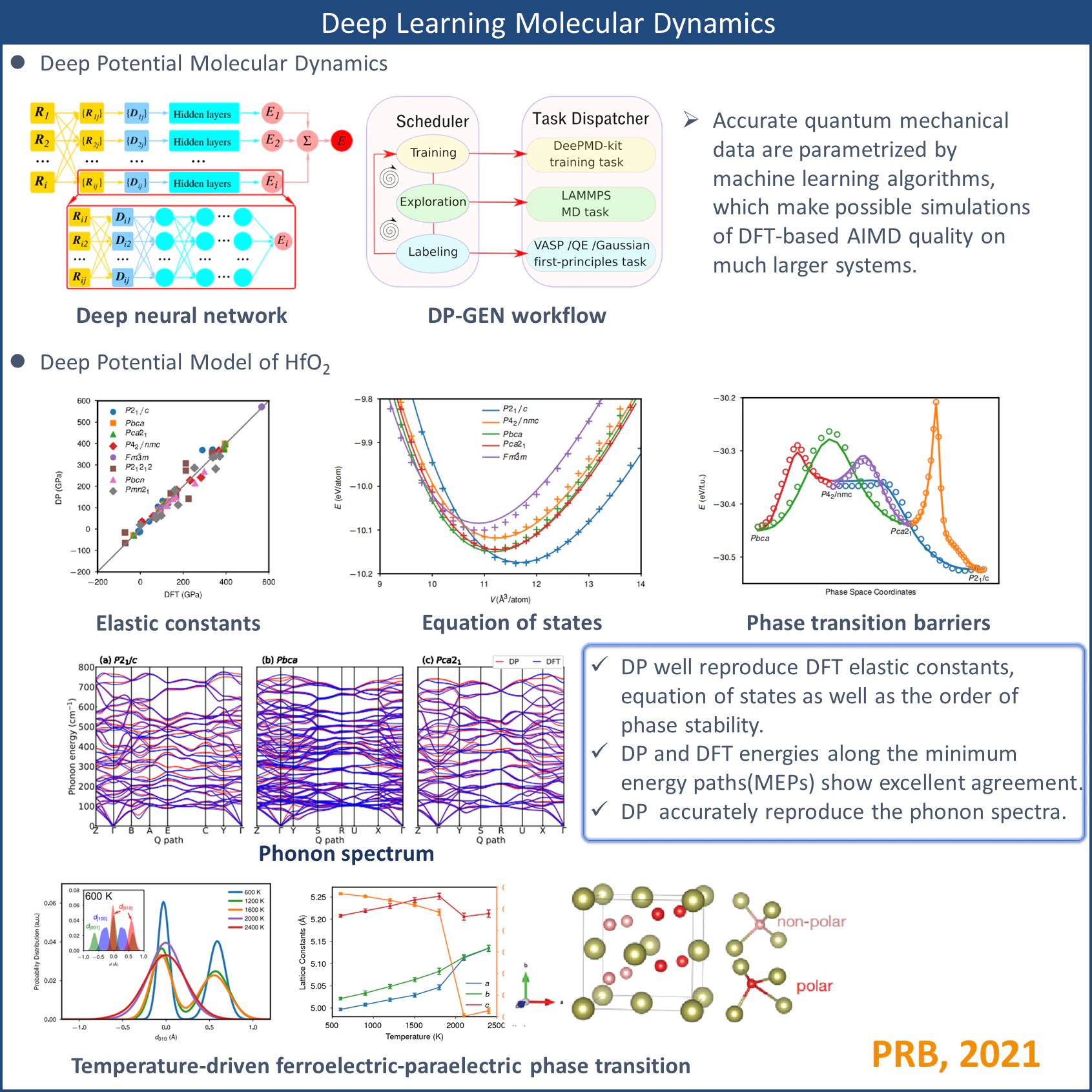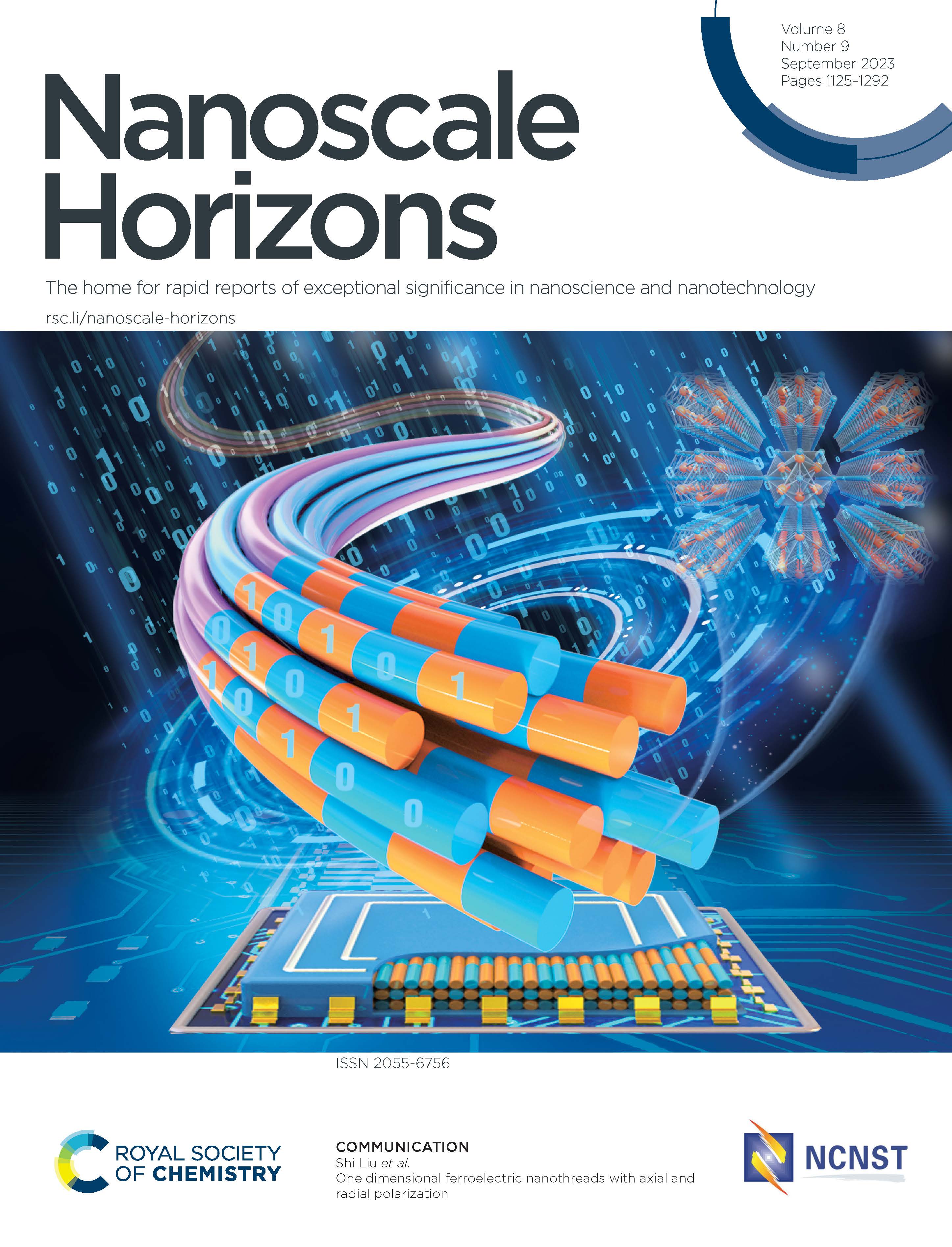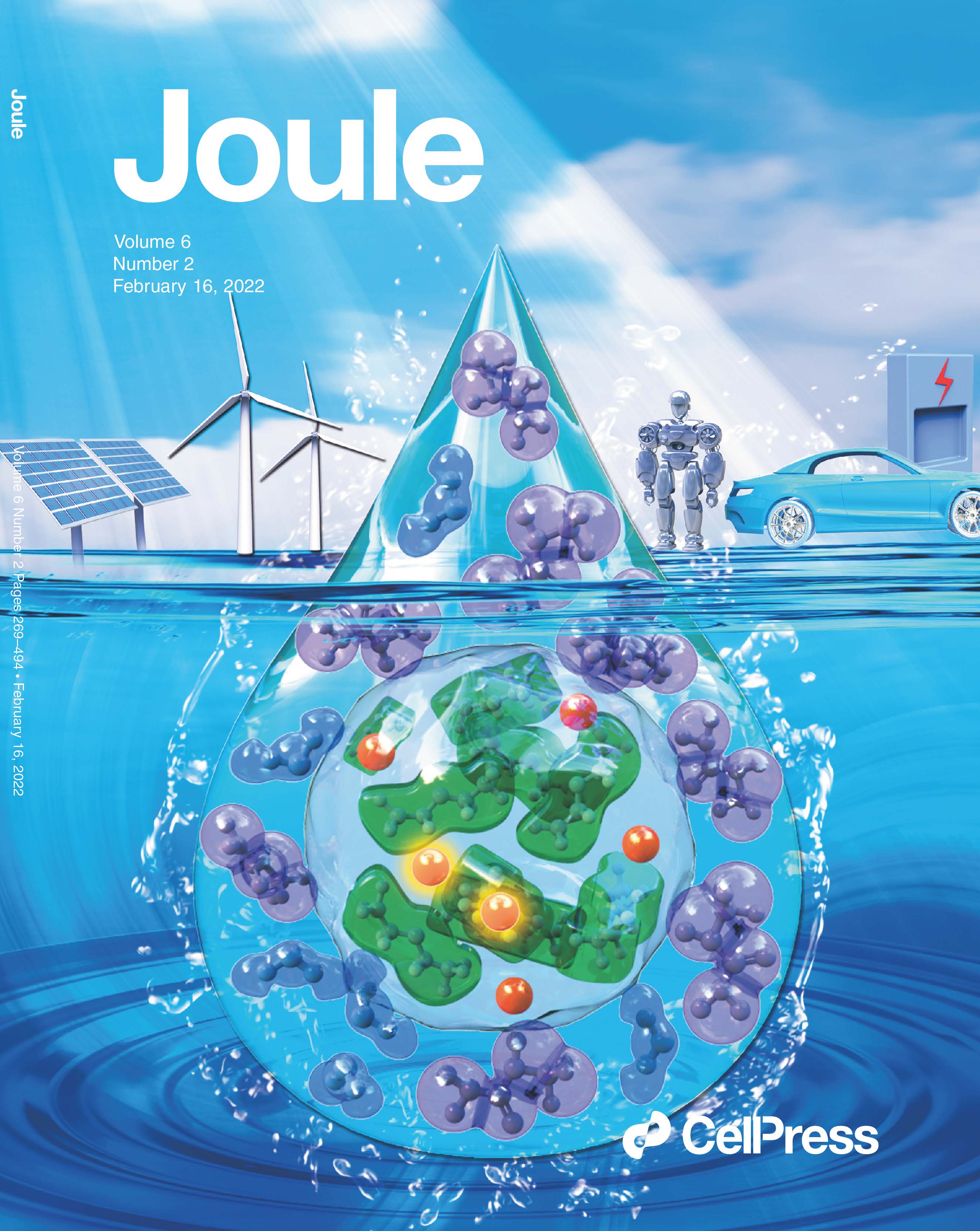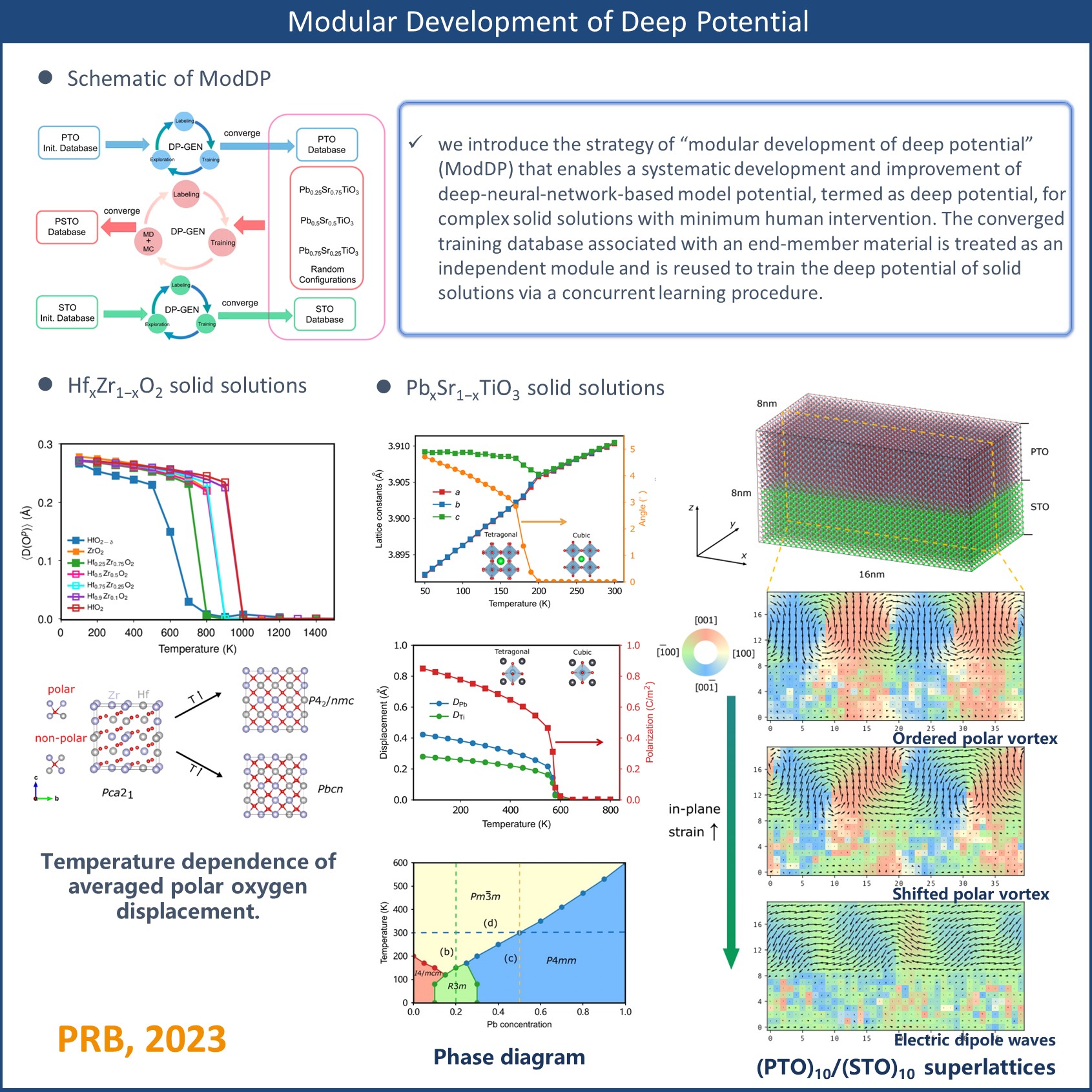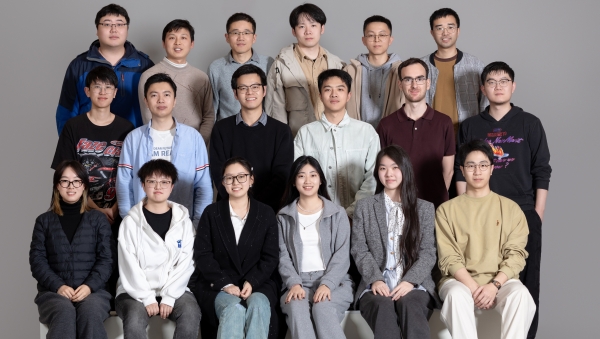The overarching theme of our research is to develop and apply predictive multiscale computational approach that combines formerly isolated methods to enable accurate and efficient estimations of materials properties at technologically relevant length/time scales.We comprehend the structure-property relationships of current state-of-the-art materials and then use these insights to guide the design of advanced materials. Research areas in our lab are in:
- Novel ferroelectrics for next-generation energy and information technology.
- Topological phases in condensed matter physics.
- Deep-learning-based large-scale modeling of complex oxides.
Explanation of Website Background Image: The background image on our website provides a vivid representation of our lab's three primary research areas. We have developed a deep neural network-based classical force field, facilitating large-scale molecular dynamics simulations of the PbTiO3/SrTiO3 superlattice. PbTiO3 is a prototypical ferroelectric material possessing spontaneous electric polarization. Within this superlattice, PbTiO3's unit cells exhibit electric dipoles, leading to the emergence of vortex structures - topological configurations in real space. To enhance the visual appeal of this snapshot, we have artistically blended it with elements from Van Gogh's iconic masterpiece, "Starry Night," using a specialized AI algorithm.
